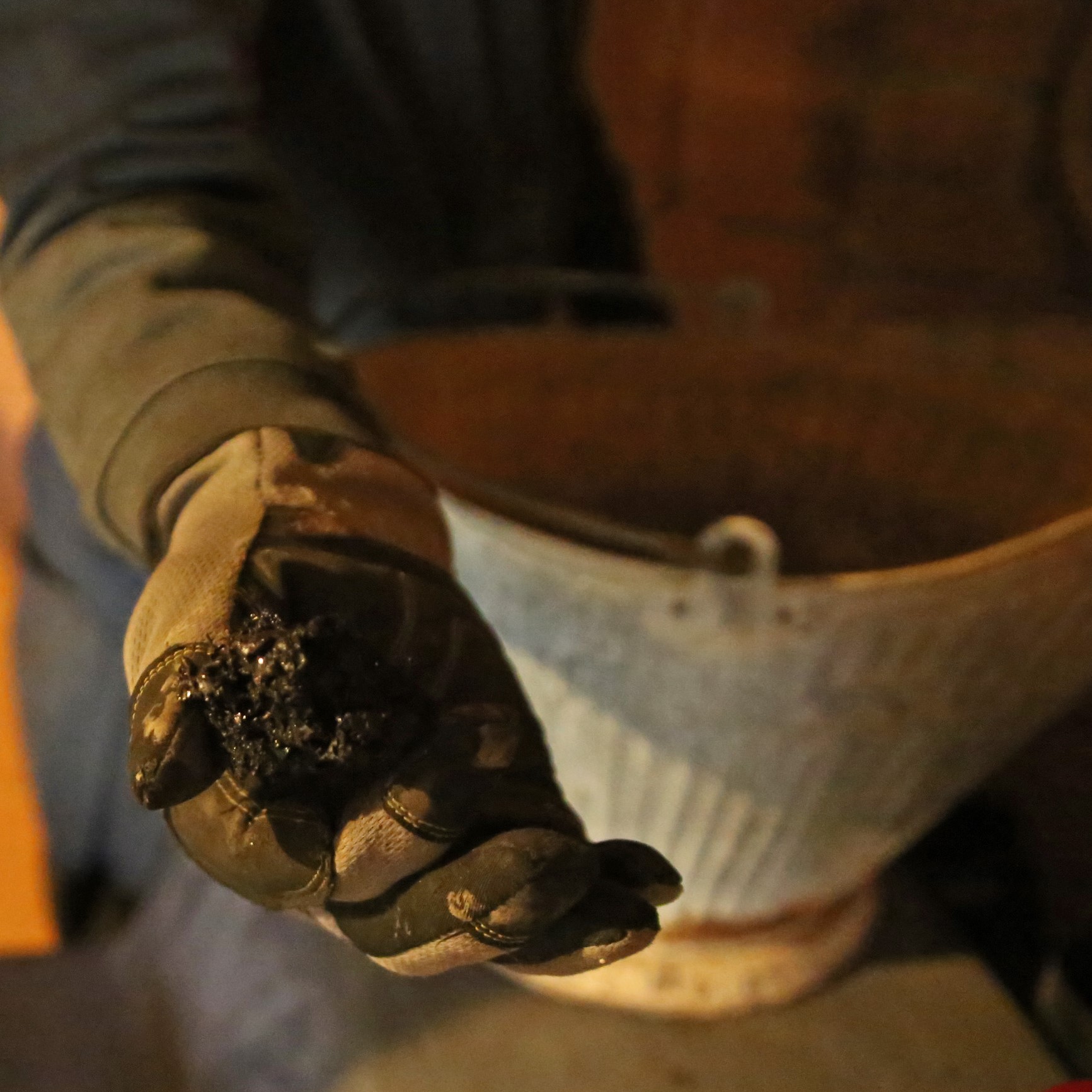Introduction: The Perils of Creosote Buildup
As the crackling flames of your fireplace dance before your eyes, casting a warm glow upon your home, little do you know the hidden danger lurking within your chimney flue—creosote. This sticky, tar-like substance, a byproduct of burning wood, can accumulate over time, posing a significant threat to your safety and the integrity of your chimney. Neglecting creosote buildup can lead to devastating chimney fires, releasing toxic fumes into your home and potentially causing structural damage. To prevent such catastrophic events, it’s imperative to take prompt action to remove creosote from your chimney flue.

Image: www.firenstone.com
Understanding Creosote: Its Formation and Effects
Creosote is a complex mixture of chemicals formed when wood undergoes incomplete combustion. Factors such as the type of wood burned, the efficiency of your fireplace, and the presence of moisture can influence creosote buildup. Excessive creosote accumulation occurs when the combustion process produces more smoke than the flue can handle, resulting in condensation and the formation of creosote.
The presence of creosote in your chimney flue is not merely an aesthetic issue; it carries severe consequences. This sticky substance can obstruct the flue, impeding the proper flow of combustion gases. The buildup can also lead to the narrowing of the flue, forcing the gases to search for alternative escape routes, increasing the risk of chimney fires. Moreover, creosote is highly flammable, acting as fuel for potential chimney blazes that can spread rapidly through the structure of your home.
Step-by-Step Guide to Creosote Removal
Recognizing the urgency of removing creosote from your chimney flue, let’s delve into a step-by-step guide to ensure a safe and efficient fireplace experience:
1. Inspecting the Chimney Flue
Before embarking on the creosote removal process, a thorough inspection of the chimney flue is essential. This step allows you to assess the extent of creosote buildup and identify any potential obstacles or safety hazards. Hire a qualified chimney professional for a comprehensive inspection, as they possess the expertise to identify hidden issues and recommend the most appropriate course of action.

Image: www.youtube.com
2. Gathering the Necessary Tools
To tackle the creosote removal task effectively, equip yourself with the following tools:
- Chimney cleaning brush: Select a brush with stiff bristles, specifically designed for chimney cleaning.
- Chimney rods: These flexible rods connect to the brush, allowing you to reach the entire length of the flue.
- Power drill or cordless drill: A power drill will significantly enhance the efficiency of your brushing efforts.
- Safety goggles: Protect your eyes from dust and debris during the cleaning process.
- Dust mask: Avoid inhaling harmful particles by wearing a dust mask.
- Gloves: Shield your hands from creosote and soot.
3. Preparing the Fireplace
Prior to cleaning the chimney flue, prepare the fireplace to minimize mess and ensure safety:
- Remove any obstructions from the fireplace, such as grates or logs.
- Spread a drop cloth on the floor in front of the fireplace to catch falling debris.
- Open windows or doors to create proper ventilation.
4. Attaching the Brush and Rods
Assemble the chimney cleaning tools by attaching the brush to the rods and connecting the rods to the power drill. Ensure the brush is securely fastened to prevent it from detaching during the cleaning process.
5. Inserting the Brush into the Flue
Carefully insert the brush into the bottom of the flue, guiding it gently upwards. Avoid forceful movements to prevent damage to the flue.
6. Scrubbing the Flue
With the brush fully inserted, activate the power drill and begin scrubbing the flue walls. Move the brush up and down, applying moderate pressure to dislodge creosote buildup. Continue scrubbing until the entire length of the flue has been cleaned.
7. Removing the Creosote Debris
As you scrub the flue, creosote and soot will loosen and fall into the fireplace. Regularly pause the scrubbing process to remove the debris and prevent clogging. Use a dustpan and brush to collect the fallen material.
8. Repeating the Process
Inspect the brush after each pass through the flue. If significant creosote remains, repeat the scrubbing process until the brush comes out relatively clean. Multiple passes may be necessary for heavily creosoted flues.
9. Final Inspection
Once you’re satisfied with the creosote removal, perform a final inspection using a flashlight. Check for any remaining creosote deposits and repeat the cleaning process if necessary.
Additional Tips for Optimal Creosote Management
While removing creosote is crucial, adopting proactive measures to minimize its buildup will extend the life of your chimney and ensure its continued safe operation:
- Burn Properly Seasoned Wood: Using well-seasoned, dry wood burns more efficiently, producing less smoke and creosote.
- Keep the Fireplace Damper Open: Opening the damper during and after each fire allows combustion gases to escape properly, reducing creosote buildup.
- Regularly Inspect and Clean the Chimney: Schedule regular chimney inspections and cleanings to detect and remove creosote accumulation before it becomes excessive.
- Use Chimney Caps: Install chimney caps to prevent moisture and debris from entering the flue, reducing the likelihood of creosote formation.
How To Remove Creosote From Chimney Flue
Conclusion: The Importance of Chimney Flue Maintenance
Removing creosote from your chimney flue is a vital task for ensuring the safety and efficiency of your fireplace. By following the steps outlined in this comprehensive guide, you can effectively eliminate creosote buildup and prevent potential hazards. Remember to adopt proactive maintenance measures to minimize creosote formation and enjoy a cozy and safe fireplace experience for years to come.